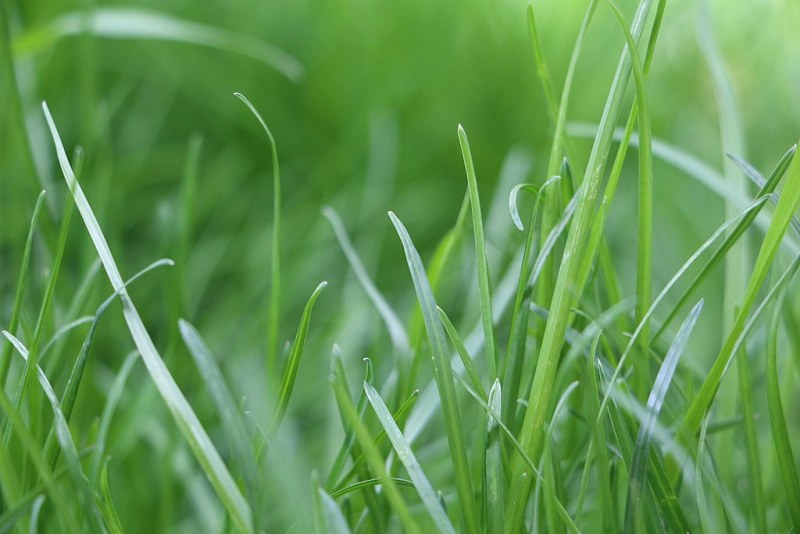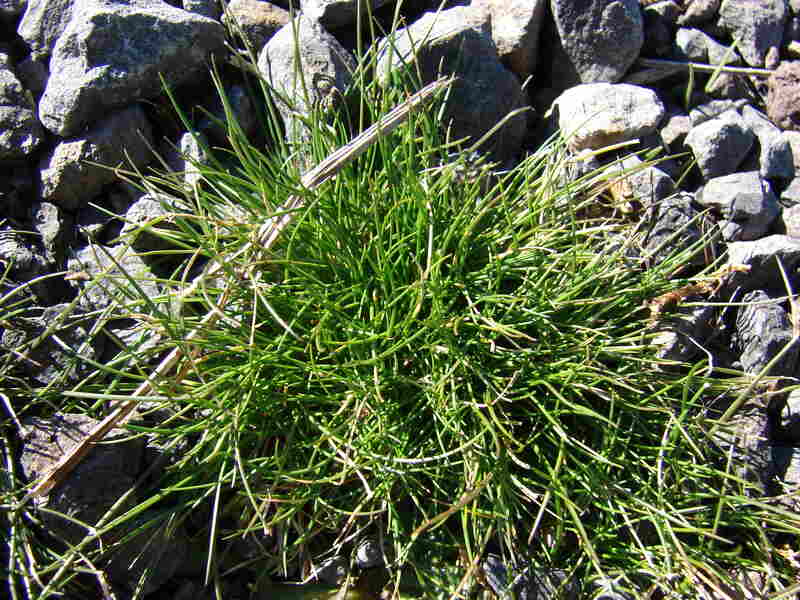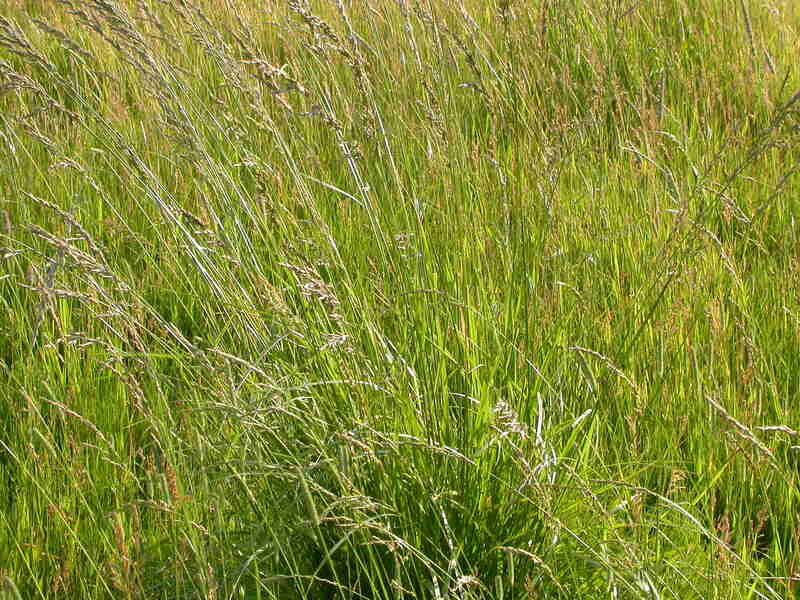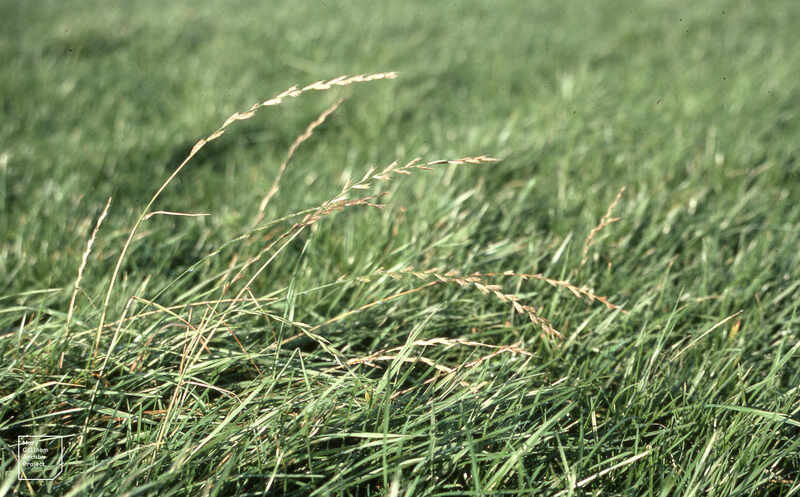4 Best Grass Types for Flint, MI
BY AYOOLA AZZAN | MARCH 23RD, 2023 | FLINT, LAWN CARE, MICHIGANFor a cold-weather city like Flint, cool-season grasses are ideal. However, not all grass varieties can tolerate the region’s chilly weather. Here are the best grasses for seeding and growing lawns in Flint.
In this article:
4 Great Grasses for Flint
In Michigan, where each season is distinct and vibrant and winters are frosty, cool-season grasses thrive. They actively grow in early spring and fall and stay green late into the fall before going dormant.
Here is a closer look at each.
1. Kentucky Bluegrass

Photo Credit: Pilot138-17 / Wikimedia Commons / CC BY-SA 4.0
This grass is a top choice for Michigan homes because it tolerates cold and thrives in well-drained soils. In addition, its fast-growing, sod-forming properties allow for quick recovery of bare spots. It’s most easily recognized by its boat-shaped leaf tip and narrow grass blades. Its fine texture is highlighted by a lush emerald blue-green hue that makes it both visually appealing and comfortable under bare feet.
To look its best and last as long as possible, this grass needs a fair amount of maintenance. Kentucky bluegrass needs regular fertilization per season and a lot of water during hot, dry spells to produce high-quality, weed-free turf grass.
- Classification: Cool season perennial
- Spreads by: Rhizomes (underground stems)
- Drought tolerance: Moderate to high
- Foot traffic tolerance: Moderate to low
- Shade tolerance: Low
- Maintenance needs: High
- Recommended mowing height: 2-3 inches
Pros
- Ability to recover quickly from damage
- Has a rhizome growth pattern that spreads quickly
- Can withstand heavy foot traffic
- Ideal for both cold winters and moderately warm summers
Cons
- Slow germination rate
- Shallow roots
- Doesn’t tolerate heat and drought well
2. Fine Fescue

Fine-leaf Fescue
Photo Credit: Forest and Kim Starr / Flickr / CC BY 2.0
Fine fescue is another grass that performs well in cool or cold climates like Flint and maintains its fresh appearance year-round. In terms of drought and shade tolerance (partial or complete), this grass outperforms Kentucky bluegrass. Thanks to its deep roots, the finely textured, dark green blades germinate amazingly fast, even in poor or challenging soils.
The only thing to worry about with fine fescue is the amount of water. Excessive fertilizer and water use will eventually harm this hardy grass species and cause thinning.
- Classification: Cool season perennial
- Spreads by: Mostly bunches, except for creeping red fescue, which spreads by rhizomes
- Drought tolerance: High
- Foot traffic tolerance: Low to moderate
- Shade tolerance: High
- Maintenance needs: Low
- Recommended mowing height: 2-3 inches
Pros
- Superior shade tolerance
- Little or no fertility
- Rapid germination
- Requires less mowing, watering, and fertilizer
Cons
- Needs dry soils
- Slow recovery rate
- Thatch builds up quickly
3. Tall Fescue

Tall Fescue
Photo Credit: Matt Lavin / Flickr / CC BY-SA 2.0
Tall fescue is an improved version of fine-textured fescue with a good covering time, excellent turf quality, minimal maintenance requirements, and higher tolerance to heat and drought. Its excellent performance on sandy and dry soils makes it ideal for dry regions in Michigan’s warmer climate.
Homeowners with pets, lots of kids, or who have had insect problems in the past may want to try tall fescue. The downside is that its rapid growth requires more frequent lawn mowing.
- Classification: Cool season perennial
- Spreads by: Bunches, a few varieties spread by rhizomes
- Drought tolerance: High
- Foot traffic tolerance: High
- Shade tolerance: Moderate to high
- Maintenance needs: Low
- Recommended mowing height: 2-3 inches
Pros
- Tolerates heat, drought, and shade
- Extensive root
- Can handle wear and tear
Cons
- Limited capacity to self-repair
- Fast growth requires regular mowing
4. Perennial Ryegrass

Photo Credit: Dr Mary Gillham Archive Project / Flickr / CC BY 2.0
Perennial ryegrass is renowned for growing extremely fast. Given the right conditions, it can begin growing in as little as five days. It’s hardy and drought-resistant, similar to fescue. Because of its rapid growth, perennial ryegrass acts as temporary shade for bluegrass to establish itself, as well as for varieties that cannot tolerate direct sunlight.
Perennial ryegrass grows in clumps and cannot spread because it has no rhizomes or stolons. This makes it less tolerant of heavy use.
- Classification: Cool season perennial
- Spreads by: Bunch-forming
- Drought tolerance: Moderate
- Foot traffic tolerance: Moderate
- Shade tolerance: Moderate to high
- Maintenance needs: Low
- Recommended mowing height: 2-2.5 inches
Pros
- High in nutrients
- Rapid germination
- Retains color in winter
- Low maintenance
Cons
- Limited capacity to self-repair
- Doesn’t spread
- Might not survive extreme winters
FAQ
Plant between August and October for best results. If you miss that, try mid to late spring, but no later than mid-June.
Kentucky bluegrass. Its high cold hardiness makes it the most commonly grown grass in Michigan.
Tall fescue is tough enough to withstand Michigan’s cold winters, as well as heat and drought. Its deep, hard roots help it survive harsh conditions, even when heavily walked on.
It depends on the grass species and climate. On average, grass seed in Michigan takes 7 to 14 days to germinate.
Final Thoughts
As you can see, the best grass seed for a lawn in Michigan depends on where you live and the time of year. It’s, therefore, important to know the grass species to plant and maintain the lawn in the right place.
Establishing and maintaining a great lawn is tough. If you need a little help, reach out to our lawn care pros.
Main Image Credit: Peakpx